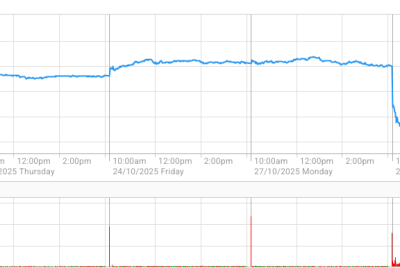How Many Payment Options Should I Have on My Website?
Consumers today want experiences that are faster, easier, and more seamless than they have ever had before—especially when it comes to purchasing online. This is why it is critical to provide customers with a variety of payment alternatives. Today's commerce or e-commerce battlefield requires you to assess every step of your customer's journey to ensure that the user experience (UX) you provide them is impeccable, which includes the checkout process.
Why you should provide your customers with a variety of payment options?
There are several business-enhancing advantages to providing your consumers with a variety of payment alternatives. The most significant are as follows:
1. For convenience and expectation:
The worldwide average shopping cart abandonment rate for retail is more than 70%, which is higher than the national average. Aside from that, most buyers will abandon a badly designed website in favor of one that simplifies the process of acquiring a product or service. Sluggish checkout processes, which force customers to pause and finally abandon their shopping carts, are one of the causes contributing to this high percentage.
Consumers today want brands to anticipate and satisfy their demands head-on. By providing your consumers with a variety of payment alternatives, you will establish yourself as a thoughtful and innovative company. As a result, your brand's visibility will be enhanced while sales are increased, resulting in a reduction in the number of abandoned shopping carts.
2. Increase in target audience size:
By providing a variety of convenient payment options, you can attract a larger number of customers. Different generations and demographics of customers prefer to use different payment methods, and this is reflected in their preferences. If you cater to all of them, you will see an increase in the size of your audience.
3. Start or increase your international sales:
One advantage of having an online shop is that you can sell to anybody on the globe, which is something you couldn't do with a traditional brick-and-mortar store. Selling overseas, on the other hand, may need the use of additional gateways. When your company begins to expand abroad, it will be necessary for you to take payments in the nations where your target audience lives and works. When you decide to provide international payment alternatives, Pay.com brings great simple online payments to use for everyone across the world.
When it comes to an eCommerce website, what are the various payment options?
Virtual Terminals and Payment Gateways:
Virtual terminals and payment gateways are relatively new technologies in the payment process, allowing for the use of a variety of payment methods and devices.
Virtual terminal technology has been integrated into the service offerings of the vast majority of card processing companies. Using a virtual terminal, you may take payments from credit and debit cards even if the card is not physically in your possession.
Payment Gateways:
A payment gateway is typically associated with customer-facing transactions, such as those conducted through a web-based shopping cart on your website. A customer's transaction information is encrypted and transferred through a transaction gateway, which transfers it to your card processor, which then delivers it to the customer's credit card issuer.
- When looking at payment gateway solutions, here are some things you should ask yourself:
- What are the fees associated with their merchant and transaction services?
- Is there a difference in interest rates between debit cards and different credit card companies?
- What procedures do they follow in the event of a dispute or chargeback?
- What kind of customer service does the company offer?
- What nations do they have their support for?
Pay attention to the following characteristics of payment gateways:
The presence of many payment processors on your website provides numerous advantages to both you and your customers. However, it is still necessary to have gateways that are tailored to the demands of the firm. Look for a payment gateway that connects with your accounting software and that produces sales reports automatically.
Processing for Credit Cards:
Credit cards continue to be the most common method of payment for products and services purchased online.
You must have an online merchant account to accept credit cards on your website (MasterCard, Visa, American Express, other major credit cards). In most cases, you may obtain an online merchant account through the same bank that processes your credit cards. If you want to accept credit cards from all major credit cards on your website, you may need to open multiple internet merchant accounts with different banks because many banks only accept credit cards from a subset of the credit cards involved.
Offline payment options:
Some of your potential clients are people who are uncomfortable with online payment alternatives, or they are people who prefer to speak with a real person. Offline payment options are available to these consumers. If you want to completely monetize your website and generate as many sales as possible, you must provide these customers with a variety of payment options. Include a toll-free number or an order form that clients can fill out and send back to you by email or traditional mail if that is what they prefer.
Final Thoughts
The success of your internet business is dependent on the volume of sales generated. Offering as many payment alternatives as possible is important since one consumer may choose to pay with a watch, another may want to pay with a credit card, and a third may choose to pay with cash.
Customers will stay on your e-commerce site or in your store longer if they have the opportunity to pay in their choice, which is a combination of all the alternatives accessible. If you do not provide a service that allows someone to pay for their transportation, the likelihood of losing that customer is considerable.





















